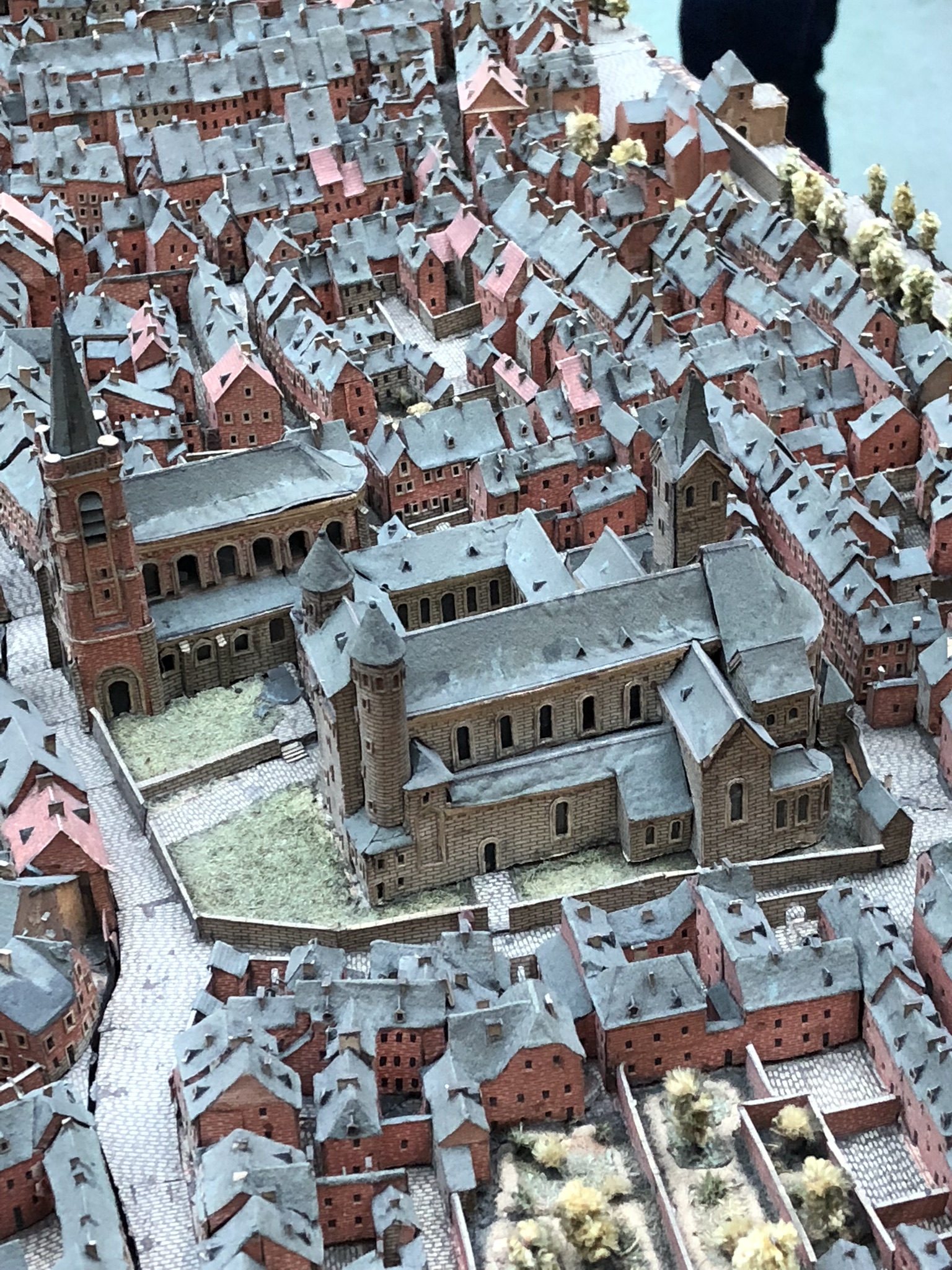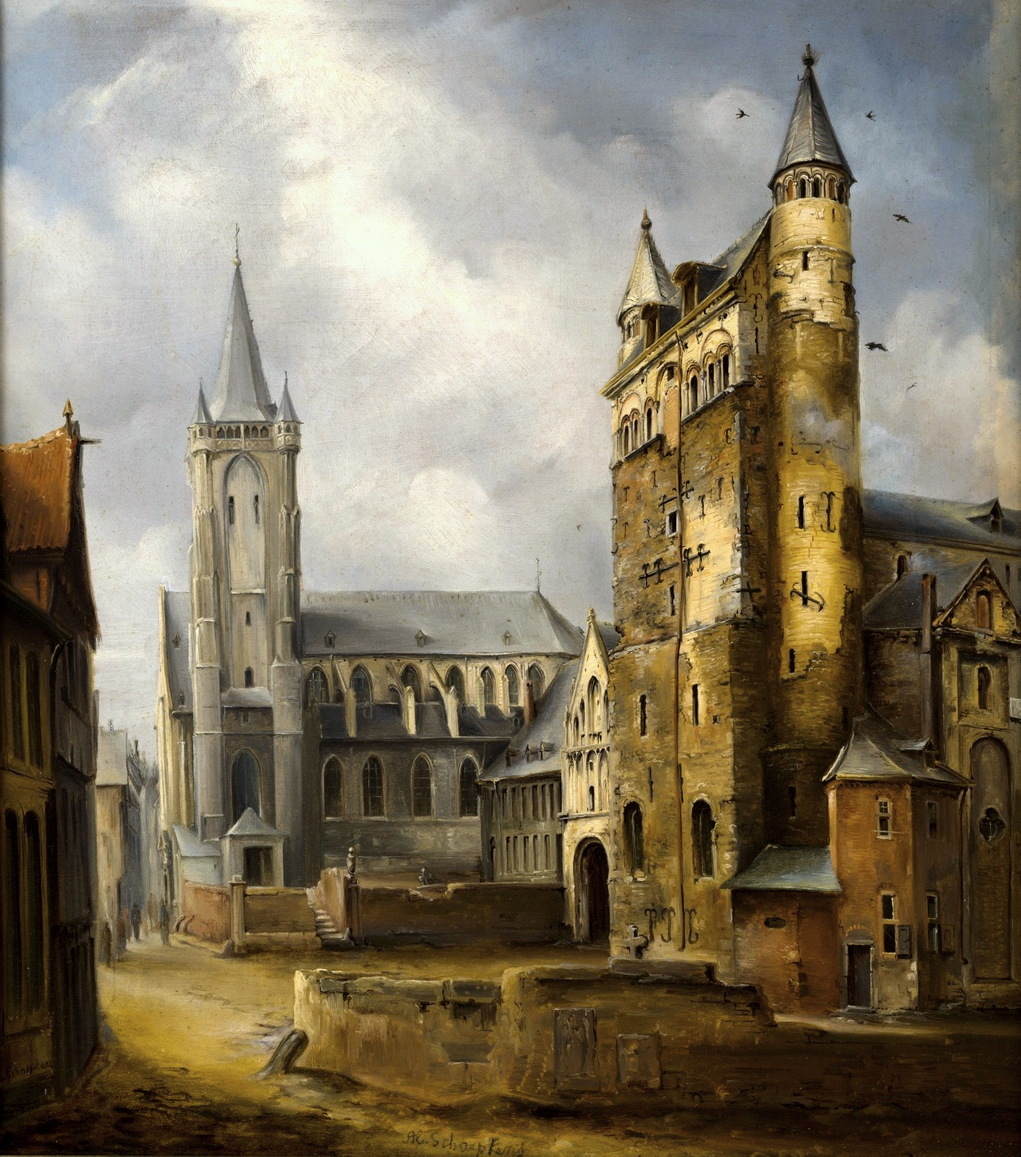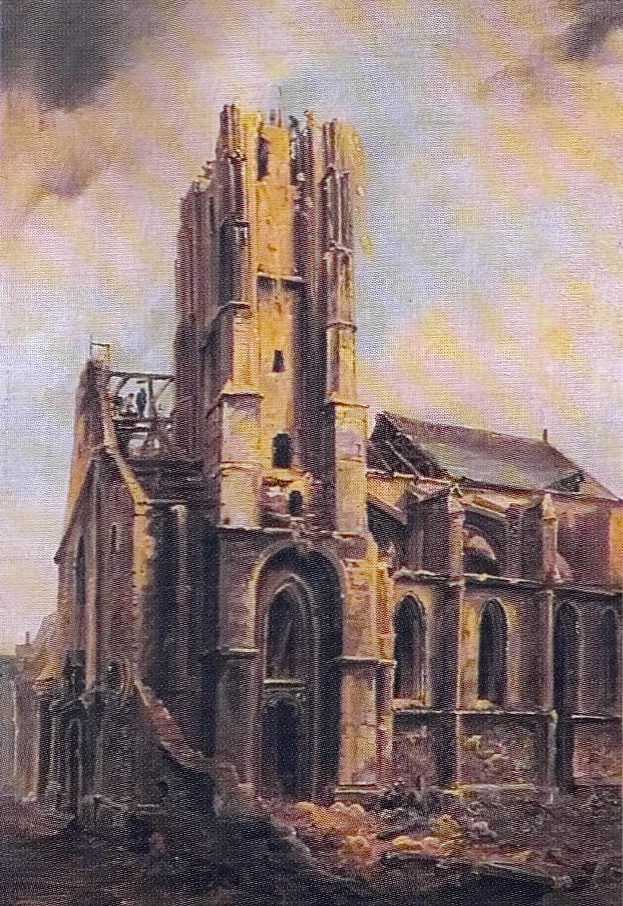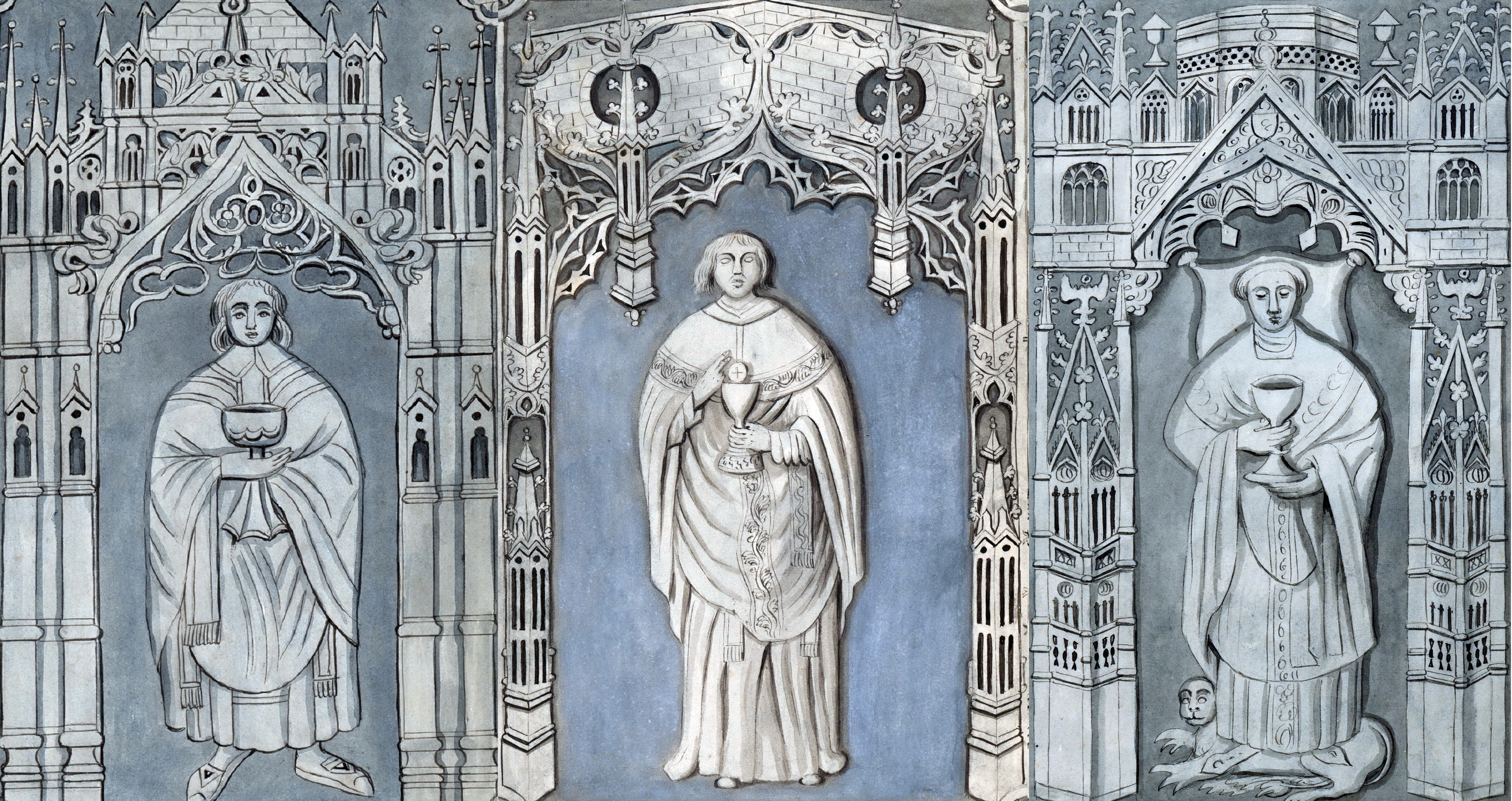
 |
| Fig. 7: A view on the onze Lieve Vrouweplein in 1748 |
Maastricht has three central squares, unusually many for a city the size of Maastricht: the Markt, the Vrijthof and the Onze Lieve Vrouweplein. The latter was originally not a square, but an open space in front of the church where the dead were buried. At first only the Church of Our Lady stood here, surrounded by houses. When the chapter lords wanted the church for themselves, the parishioners received their own church in 1343, the Saint Nicolas church, which stands right next to the Our Lady's church. The chapter lords, or canons, formed a secular spiritual order, meaning they were not a closed monastic community. Their tasks consisted of daily prayer in the collegiate church, pastoral care, education and charity.
 |
Fig. 8: A painting showing the Onze lieve Vrouweplein in the nineteenth century, with the Onze Lieve Vrouwekerk to the right and the Sint Nicolaaskerk to the left |
The chapter of Our Lady had the capacity for 20 so-called prebends, a stipend of the benefits that were linked to a place in the chapter. In addition to the large chapter, from 1622 there was also a college of minor canons of Saint Anna, a confraternity of chaplains. There were 16 positions associated with this.
 |
Fig. 9: Demolition of the Saint Nicholas Church in 1838 |
Canons were often nobles and career clergy. The chaplains often performed tasks of the chapter lords for a modest fee and were attached to specific altars in the church and regularly had to organize dedicated masses. Canons were very often ordained as (sub)deacon or priest, but not always. Married canons are also known, who lived with their wife and children in a chapter house. Canons had themselves buried in the church or in the pavilion garden of the Church of Our Lady.
 |
| Fig. 10: Grave stones of canon graves, drawn by Philippus van Gulpen (1792-1862) |
The open space in front of both churches increasingly filled with graves of parishioners and the graves piled up so high that at some point the ground around the church had to be raised. The graveyard of the Church of Our Lady was once even larger until 1665, when a part that is now under the road was given up in order to widen the street to the Maas River.
Reference:
Haas, J. A.K., Inventaris van de archieven van het kapittel van Onze-Lieve-Vrouw te Maastricht 1096-1797, Publicaties Rijksarchief Limburg nr. 6, Maastricht, 1999.